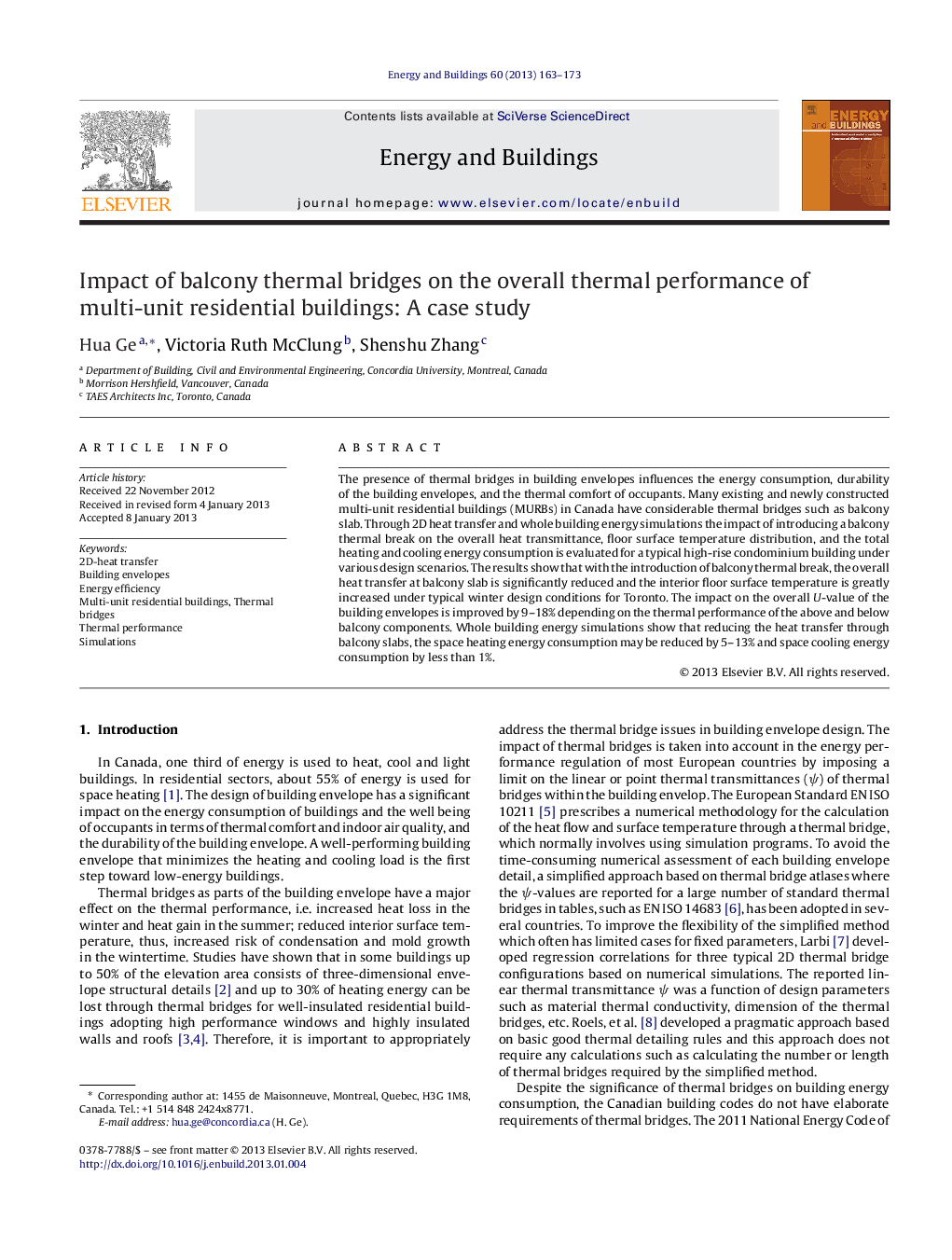| Article ID | Journal | Published Year | Pages | File Type |
|---|---|---|---|---|
| 263345 | Energy and Buildings | 2013 | 11 Pages |
The presence of thermal bridges in building envelopes influences the energy consumption, durability of the building envelopes, and the thermal comfort of occupants. Many existing and newly constructed multi-unit residential buildings (MURBs) in Canada have considerable thermal bridges such as balcony slab. Through 2D heat transfer and whole building energy simulations the impact of introducing a balcony thermal break on the overall heat transmittance, floor surface temperature distribution, and the total heating and cooling energy consumption is evaluated for a typical high-rise condominium building under various design scenarios. The results show that with the introduction of balcony thermal break, the overall heat transfer at balcony slab is significantly reduced and the interior floor surface temperature is greatly increased under typical winter design conditions for Toronto. The impact on the overall U-value of the building envelopes is improved by 9–18% depending on the thermal performance of the above and below balcony components. Whole building energy simulations show that reducing the heat transfer through balcony slabs, the space heating energy consumption may be reduced by 5–13% and space cooling energy consumption by less than 1%.
► 2D heat transfer analysis of balcony slab thermal bridges. ► Impact of envelope designs on energy efficiency of high-rise residential buildings. ► Up to 11% space heating energy may be saved by eliminating thermal bridge at balcony slab.
